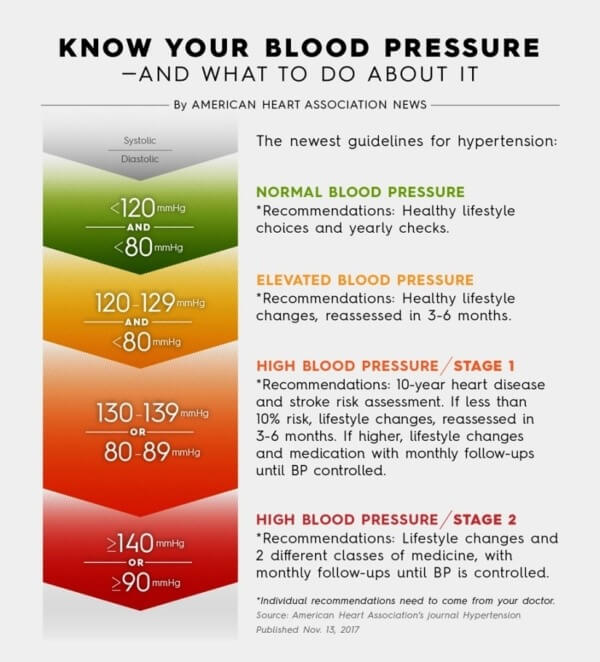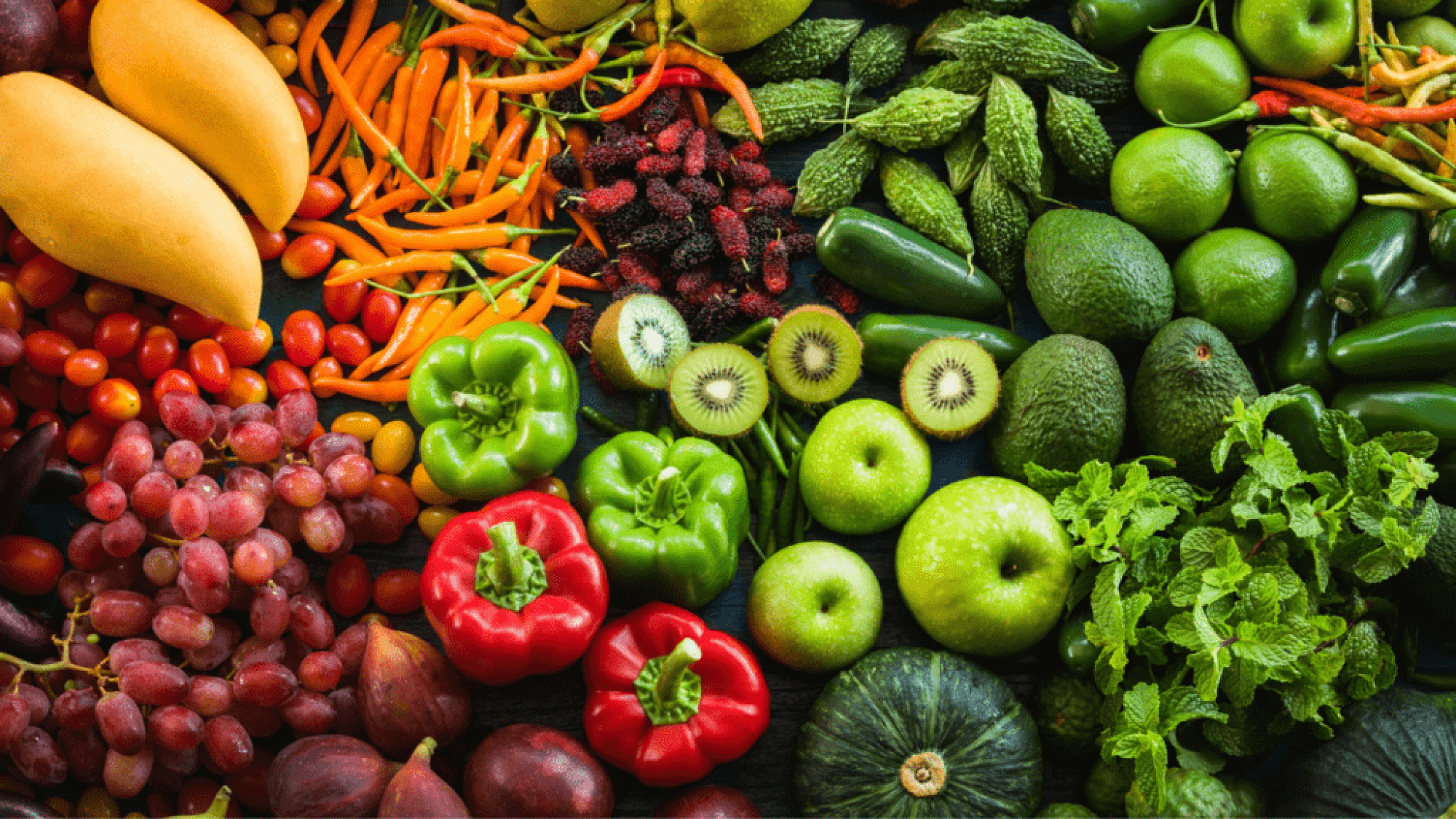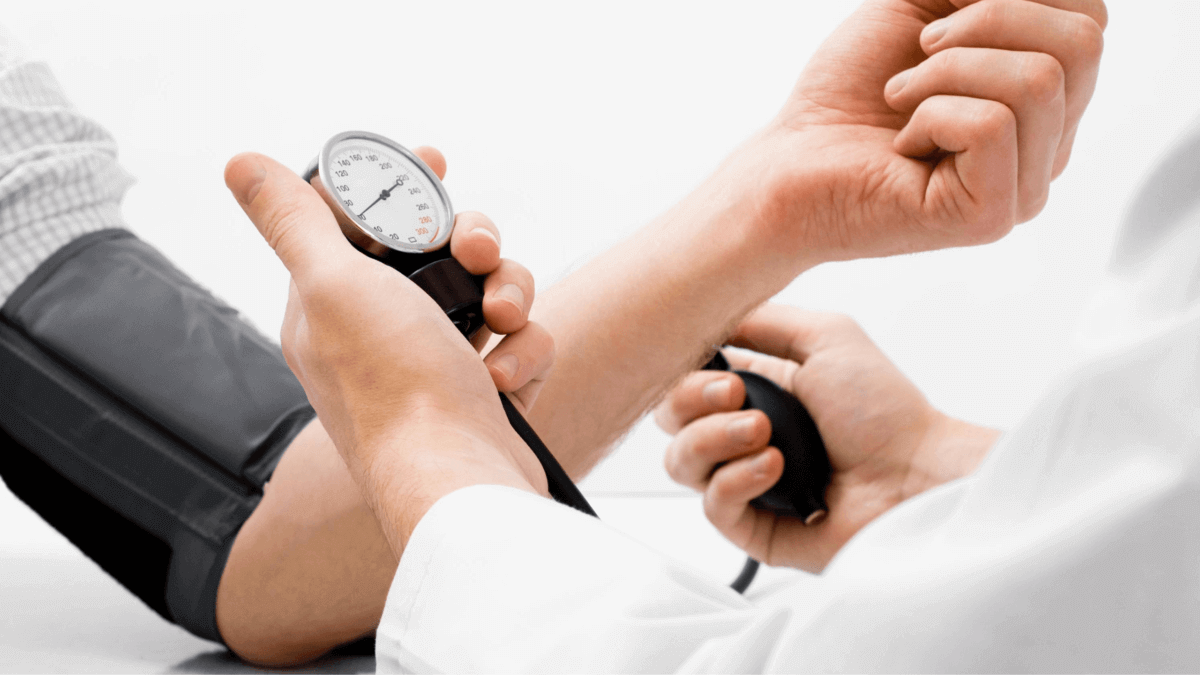Do you have high blood pressure and are looking for ways to get it under control? You may be on medication to treat hypertension, but many people can effectively lower their blood pressure with the right nutrition. In this post, I’m sharing the key information you need to know about how to eat for hypertension.
What is Hypertension?
Hypertension is another word for high blood pressure. It is a condition affecting nearly half of the United States adult population. Blood pressure is measured using two readings: systolic and diastolic pressure. Systolic is the first number and is the amount of pressure in your arteries during the contraction of your heart muscle. The second number is diastolic and refers to the amount of pressure between your heart beats.
A normal blood pressure reading is less than 120/80. A systolic pressure between 120-129 and a diastolic pressure less than 80 is still considered elevated. A systolic pressure above 130 or a diastolic pressure above 80 is considered Stage 1 hypertension. Many people can manage these through dietary and lifestyle changes. The goal being to reduce these numbers back to a normal range.
A systolic pressure over 140 or diastolic over 90 puts you in the category of Stage 2 hypertension. This is more likely to require both lifestyle and medication intervention. Hypertension can have very few symptoms, so you may not even know you have it! This is why it is especially important to get your blood pressure checked regularly.

Why is it a Health Risk?
Elevated pressure on your blood vessels can lead to all sorts of health problems. It can cause a heart attack, chronic kidney disease, or a stroke. People with hypertension have double the risk of cardiovascular complications, compared to those with normal blood pressure. Keeping your blood pressure at a normal level is important to avoid serious and life-threatening conditions!
What Diet and Lifestyle Considerations are Important for Managing Hypertension?
Being overweight or obese puts you at a higher risk for developing hypertension, so weight loss may be an effective approach for many people. You can also change your diet to help control hypertension.
One effective nutrition plan for those with high blood pressure is called the Dietary Approach to Stop Hypertension, or the DASH diet. This diet is abundant in fruits and vegetables, whole grains, legumes, low-fat dairy products and nuts. It limits saturated fat and cholesterol and encourages a minimal meat intake.
The DASH diet is very flexible, and you can combine it with other ways of eating. Be sure to talk with your healthcare provider about how the DASH diet can work for you.

What Nutrients are Important for Managing Blood Pressure?
In addition to following the DASH eating pattern, there are several key nutrients to keep in mind when trying to manage your blood pressure. Sodium (AKA salt) is one of the most important minerals involved in regulating blood pressure, and you may be consuming too much! Sodium is abundant in packaged or prepared foods, such as chips, cereals, canned soups, canned vegetables, condiments, sauces, and processed meats and cheeses.
If you have been diagnosed with high blood pressure, try to limit your sodium intake to less than 2,300 mg of sodium per day, but ideally less than 1,500 mg per day. Start reading labels for sodium content! Look for low- or no-sodium foods, and always rinse off canned foods like beans. Cooking at home is a great way to control your sodium intake, as restaurants often add much more salt than necessary. Have you ever left a restaurant feeling thirsty?! This is because of the high salt content.
In addition to reducing your sodium intake, you should aim for 4,700 mg of potassium each day. Following the DASH diet will naturally increase your potassium intake, as fruits and vegetables, low-fat dairy, and fish are great sources of potassium. One medium banana will get you nearly 10% of your daily potassium needs!
If you have questions or concerns about your diet and what nutritional steps you can take to eat for hypertension, please don’t hesitate to contact me to set up an appointment.
Did you like this article? Check out my other blog posts including:
What You Need to Know About Bone Health
What Your Poop Can Tell You About Your Health


